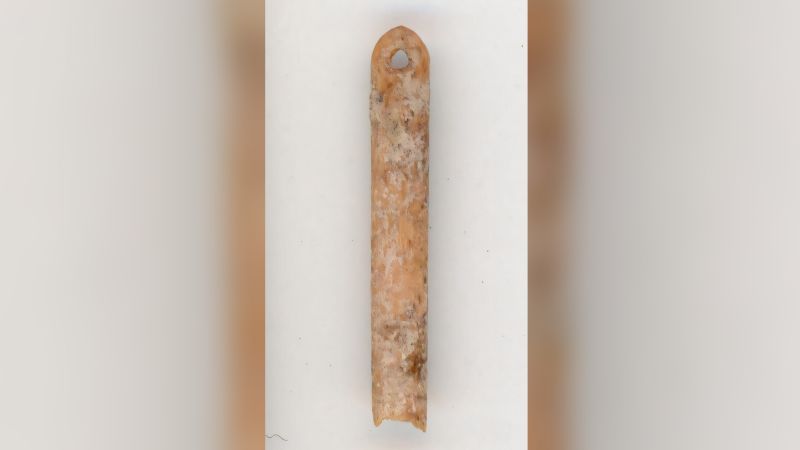Recent archaeological discoveries at a site in Wyoming, known as La Prele, are providing valuable insights into the survival strategies of early Americans during the last ice age. The remains of a mammoth, which was butchered around 13,000 years ago, have revealed tiny artifacts, including needle fragments made from animal bones. This finding not only uncovers the crafting techniques utilized by prehistoric peoples but also reflects their adaptability in harsh climatic conditions.
At the La Prele site, located in Converse County, archaeologists unearthed 32 needle fragments nearly 15 feet underground. While these needles are not the oldest in the archaeological record, they are significant because researchers were able to analyze their composition using advanced techniques. The study, led by Wyoming state archaeologist Spencer Pelton and published in the journal PLOS ONE, unexpectedly found that the needles were primarily made from the bones of smaller carnivores, such as red foxes, bobcats, and extinct species like the American cheetah, rather than larger mammals like bison or mammoths.
This unexpected revelation speaks to the resourcefulness of these ancient peoples. According to Pelton, the crafting of these needles from smaller animals challenges preconceived notions about the materials utilized by early humans. To understand the composition of these artifacts, researchers employed a technique known as zooarchaeology by mass spectrometry, or ZooMS, allowing them to extract collagen and analyze peptide data. This method demonstrated that smaller mammals played a vital role in the crafting of tools necessary for survival, and highlights the sophistication of these early cultures.
The La Prele Mammoth site dates back to 1986 when it was discovered that a group of prehistoric hunters either killed or scavenged a young mammoth. The artifacts found at the site suggest that these people were likely part of the Clovis culture, one of North America’s earliest human populations, known for their distinct stone tools. To recover the delicate needle fragments, the excavation process involved meticulous strategies, including digging multiple test pits and employing a fine screen mesh to sift through sediment, revealing concentrations of artifacts that would otherwise have been overlooked.
Given that the site was occupied during the late Pleistocene epoch, conditions were significantly colder than today, estimated to be 5 to 7 degrees Celsius lower. In such an environment, the development of tailored clothing would have been crucial for survival. Close-stitch seams made possible by the use of needles would have provided better protection against the elements than looser garments made with earlier tools. Pelton draws a parallel between the tailored garments likely created from these materials and the traditional clothing worn by the Inuit, indicating that these early Americans were adept at adapting their clothing to their climate for increased warmth and protection.
The presence of these needles suggests that early Americans not only used them for practical purposes but also for decorative elements on clothing. Research indicates that prior to the invention of the eyed needle, humans used tools called awls to create less effective, coarsely sewn garments. The discovery of the oldest bead made from hare bone also reinforces the idea that aesthetics in clothing design were important, alongside functionality.
Pelton posits that the survival strategies of these ancient peoples included trapping smaller animals for their fur and bones, although direct evidence of such practices has yet to be found at this or similar sites. Notably, Ian Gilligan, an honorary associate in the discipline of archaeology at the University of Sydney, emphasizes that the bones of small mammals are particularly suited for crafting needles due to their size and shape. The needle-making process would have been efficient for hunter-gatherers, allowing them to develop complex forms of clothing essential for adapting to their environment.
The broader significance of this discovery points to the idea that early humans leveraged clothing technology as a means to expand into new regions. Gilligan asserts that the ability to create tailored clothing may have been a prerequisite for human migration across the Bering Land Bridge from Siberia to North America, as the harsh climates at the time would have necessitated sophisticated means of insulation and protection. Overall, this research challenges the common narrative that prehistoric innovations were solely driven by the need for sustenance. It illustrates how the development of clothing technology, epitomized by the invention of needles, was equally crucial for survival and adaptation in a dynamic world. The findings at La Prele represent a fascinating intersection of technology, culture, and survival that continues to shape our understanding of human prehistory.



